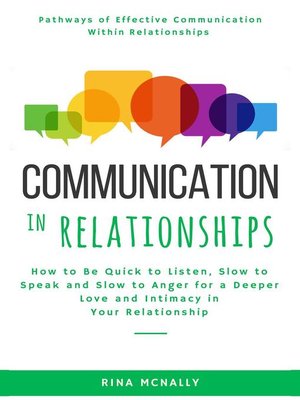Communication in Relationships
ebook ∣ How to Be Quick to Listen, Slow to Speak and Slow to Anger for a Deeper Love and Intimacy in Your Relationship
By Rina Mcnally

Sign up to save your library
With an OverDrive account, you can save your favorite libraries for at-a-glance information about availability. Find out more about OverDrive accounts.
Find this title in Libby, the library reading app by OverDrive.



Search for a digital library with this title
Title found at these libraries:
| Library Name | Distance |
|---|---|
| Loading... |
Communication in relationships is all about telling the other party about your feelings, desires, fears, frustrations, dreams, etc. However, effective communication is also about getting heard. You might spend several minutes telling your partner about something that is disturbing you, but are they really paying attention? Are your words going to have any impact on them?
Effective communication is not only about what you are trying to say, but how and when you decide to say it. Relationships, whether between friends, parents and children, or romantic partners, do not exist in a vacuum. Relationships exist between emotional human beings who have different likes, dislikes, expectations, and past experiences. For people with so many differences to exist together in harmony, there is a need for effective communication in relationships. Unfortunately, most people think that because they talk regularly with their spouses, parents, kids, or in-laws, they are automatically communicating. Nothing could be further from the truth.
Communication involves far more than just talking. Communication involves creating a deep connection with and understanding the other person. Good communication is a key ingredient in a good relationship, while poor communication can break an otherwise good relationship.
Luckily, good communication is a skill like any other, which means it can be learned. In this audiobook, you will learn ways to grow a deeper connection with your friends, parents, kids, in-laws, or significant other.
What you will find in the book:







